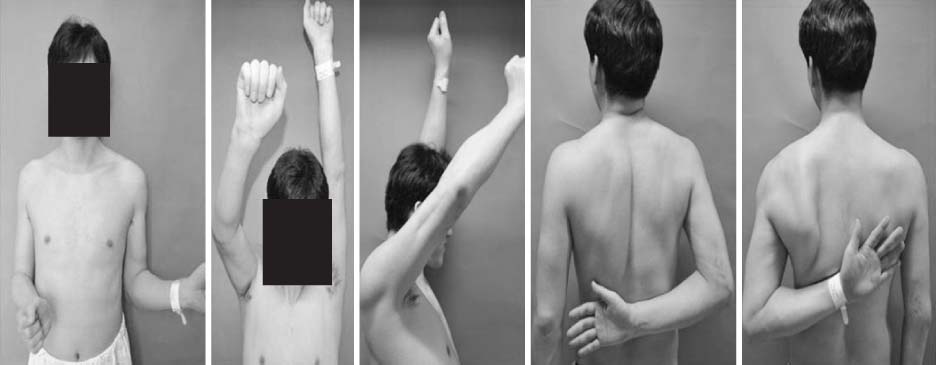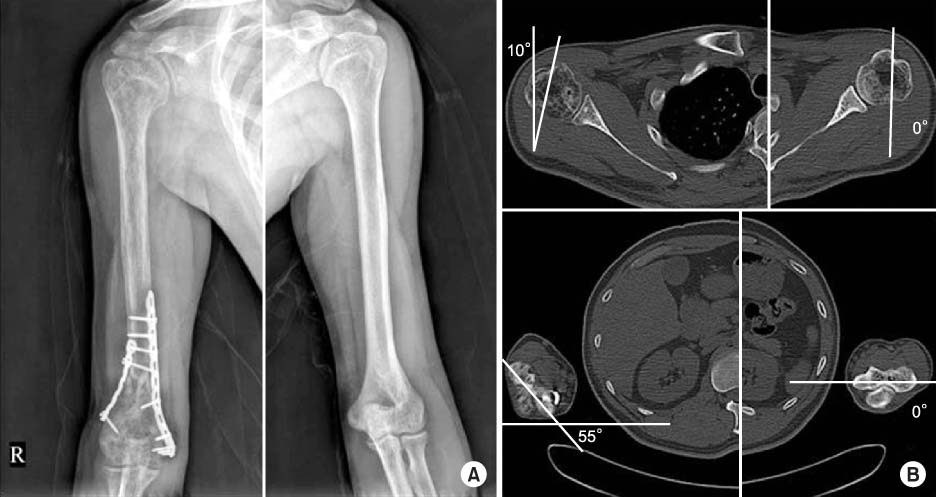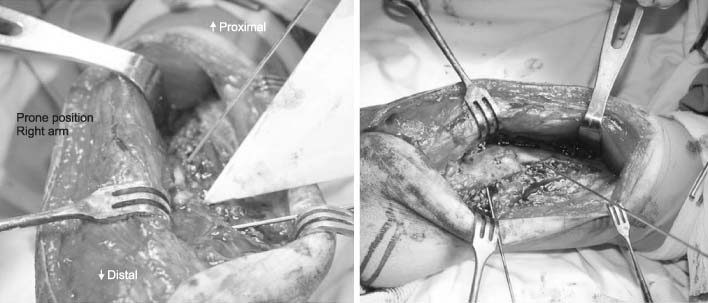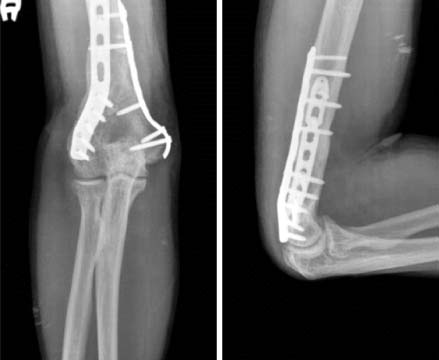J Korean Fract Soc.
2016 Jan;29(1):73-78. 10.12671/jkfs.2016.29.1.73.
Functional Recovery of the Shoulder after Correcting Malrotation of the Distal Humerus: A Case Report
- Affiliations
-
- 1Department of Orthopaedic Surgery, Daegu Fatima Hospital, Daegu, Korea. osaabga@gmail.com
- KMID: 2183769
- DOI: http://doi.org/10.12671/jkfs.2016.29.1.73
Abstract
- Although studies on malrotation of the humerus possibly leading to dysfunction of the shoulder have been reported, studies on its causes are inadequate. The authors encountered a patient complaining of malrotation accompanied by dysfunction of the shoulder which occurred during treatment of a distal humeral fracture. The patient recovered the shoulder function by only correcting malrotation of the humerus without direct treatment on the shoulder, and we report it herein with a review of the literature.
Keyword
MeSH Terms
Figure
Reference
-
1. Puloski S, Romano C, Buckley R, Powell J. Rotational malalignment of the tibia following reamed intramedullary nail fixation. J Orthop Trauma. 2004; 18:397–402.
Article2. Buckley R, Mohanty K, Malish D. Lower limb malrotation following MIPO technique of distal femoral and proximal tibial fractures. Injury. 2011; 42:194–199.
Article3. Wallny T, Sagebiel C, Westerman K, Wagner UA, Reimer M. Comparative results of bracing and interlocking nailing in the treatment of humeral shaft fractures. Int Orthop. 1997; 21:374–379.
Article4. Flury MP, Goldhahn J, Holzmann P, Simmen BR. Does Weber's rotation osteotomy induce degenerative joint disease at the shoulder in the long term? J Shoulder Elbow Surg. 2007; 16:735–741.
Article5. Constant CR, Murley AH. A clinical method of functional assessment of the shoulder. Clin Orthop Relat Res. 1987; (214):160–164.
Article6. Boileau P, Bicknell RT, Mazzoleni N, Walch G, Urien JP. CT scan method accurately assesses humeral head retroversion. Clin Orthop Relat Res. 2008; 466:661–669.
Article7. Li Y, Wang C, Wang M, Huang L, Huang Q. Postoperative malrotation of humeral shaft fracture after plating compared with intramedullary nailing. J Shoulder Elbow Surg. 2011; 20:947–954.
Article8. Robinson CM, Bell KM, Court-Brown CM, McQueen MM. Locked nailing of humeral shaft fractures Experience in Edinburgh over a two-year period. J Bone Joint Surg Br. 1992; 74:558–562.
Article
- Full Text Links
- Actions
-
Cited
- CITED
-
- Close
- Share
- Similar articles
-
- Recurrent Shoulder Dislocation and Proximal Humerus Fracture in Neurofibromatosis Type I: A Case Report
- Inlay Fibular Autograft and Helical LCP Fixation for a Segmental Comminuted Fracture of the Osteoporotic Proximal Humerus: A Case Report
- Biepicondylar Fracture of the Humerus in an Adult Female: A Case Report
- Shoulder Quadruple Dislocation Fracture: Fracture of Glenoid Rim, Coracoid Process, Greater Tuberosity, Surgical Neck of Humerus Associated with Anterior Shoulder Dislocation: A Case Report
- A Comminuted Spiral Fracture with Butterfly Fragment of Distal Humerus by Arm Wrestling: A Case Report








